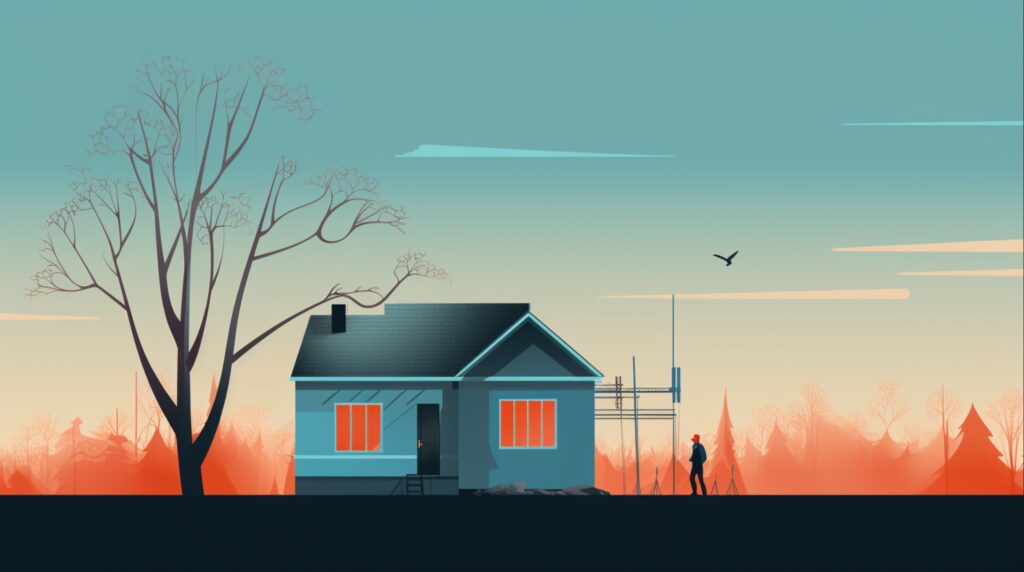
We are reader-supported. When you buy through links on our site, we may earn an affiliate commission.
Older homes provide character and sometimes just need a little TLC. You can usually buy them at a lower price and they have a good structure. The one thing to remember is that renovation can be costly and time-consuming. It can cost around $475 per square foot. So, here are ten tips for renovating an old home successfully.
1. Be Prepared for Surprises
When renovating an old home, there may be unexpected challenges. For example, there could be a hidden plumbing leak or mold issues. That’s why putting away money for an emergency fund is essential. Also, find a contractor who offers a loose bid instead of a fixed one. This ensures you aren’t stuck overpaying for extra work.
2. Work With the Right People
You want to find contractors that are trustworthy and honest. It’s also a good idea if they have experience working with older properties. It ensures they understand the challenges of renovating an old home. Ask them about their past projects or get contractor suggestions from friends. In addition, make sure the builders understand your vision.
3. Make Structural Changes First
Start with foundational problems before diving into cosmetic ones. For example, pay attention to issues with water filtration, foundation cracks and asbestos. If these aren’t addressed, it can lead to safety issues and wear down the foundation. Then the design element doesn’t matter much anyway. Also, you will have to make more costly repairs down the line.
4. Fix Any Previous Bad Renovations
Make sure you fix any issues from past homeowners first. To investigate, create small holes in the wall or peel back the carpet. If you find any damaged or low-quality structures, repair these right away. Also, bring back some of the old charms of the home.
Add framed openings, ensure molding is proportional and install metal hardware. If you’re on a tight budget, you can always simply repaint the cabinets.
5. Look at What You Have First
Embrace the aesthetic of the original home. It can make your home more unique and look consistent. Consider reusing items already in the house, such as cabinets or lighting. These can be great accent pieces and save money. It also is better for the environment by producing less waste. Plus, keep in mind the quirks of the home are one of a kind.
6. Make Functional Changes
You want to respect the design of the original house. Although, when making changes consider how they can help improve function. For example, you may need to add closets for more storage space. Another update may be creating a more open-concept or replacing the flooring. These minor changes can increase the flow and appearance of the room.
Plus, old carpeting may have tears or harbor mold. If you notice mold, remove it right away. Wear protective gloves and ventilate the space as much as possible.
7. Research the Home’s History
Knowing about your house’s history can impress your friends. You will have fun stories to tell at gatherings. Also, it allows you to replicate past construction and design methods. You can learn this through minor demolition or architectural archaeology. Check out the National Registry of Historic Places to learn more about past homeowners.
Here are a few more things you can do to learn about the history:
- Review the registry of deeds.
- Ask your realtor.
- Contact the previous owner.
- Look up old census records.
8. Select the Right Mortar
With an older home, you may need to replace the siding. When choosing one, match it with the original mortar. Pick one that is similar in color, consistency and elevation. Using too much Portland cement can create harder materials that damage buildings. Remember each type of mortar mix contains different amounts of material. So, use the correct type of mortar mix for your project.
9. Save Your Windows
Your windows provide character to the home and may have a style that can’t be replicated. For example, some have unique molding profiles or wavy glass. Therefore, consider making simple repairs. However, you’ll want to increase the casements’ energy efficiency. Add weatherstrips and seal up any cracks. You can also add inter air panels, roller shades or decorative curtains for more comfort. This also lowers your energy bills.
10. Spruce up Old Hardware
The original hardware can add a sense of charm. So, before replacing it, consider giving it a simple refresh. Clean off the dirt and grime gently. Use products with natural ingredients to prevent damage. You can also make your solution with vinegar or lemon juice. Suppose you need to replace them. Consider selling any used items online to get cash and reduce your carbon footprint.
What to Know When Renovating an Old Home
Historic homes provide a piece of history. Although, sometimes, they need some sprucing up. This process can be a little more costly and come with unexpected challenges. So, follow these when renovating an old home.










